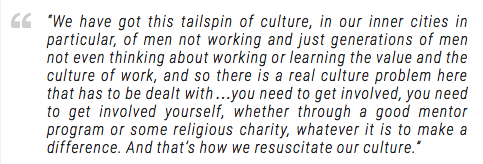A theme present in both the works of Hoffman and Jefferson is the idea of race traits and life conditions. In their most simple forms, race traits seem to be characteristics about a person, or group of people, which are determined solely by their race. On the other hand, life conditions are the external factors, such as climate and the nature of a slave’s master, which, like race traits, have an impact on the person’s behavior and characteristics.
In Hoffman’s text “Race Traits and Tendencies of the American Negro,” Hoffman attempts to explain higher rates of disease and death among “inferior” races as not a result of their particular life conditions, but rather due to their specific race traits. While discussing the increased rates of death of the Hawaiian race, Hoffman notes how, “It is not, therefore, to any unfavorable conditions of life but to a race trait, an inordinate amount of sexual immorality, that Mr. Bishop attributes the downward tendency of the race…” (Hoffman 322). Hoffman seems to attribute increased rates of disease and death among a particular race as not a result of, for example, a new introduction of disease into the area by new comers, but rather as a result of a specific race’s natural tendency to “sexual immorality” that causes their higher rates of disease and death. In order to prove why this increased rate of disease and death is a result of natural race traits rather than life conditions, Hoffman looks at the improvement of life conditions with the introduction of European civilization into these “troubled” regions. As Hoffman notes, “With every possible chance that improved conditions of life could offer, with all the churches and schools that were needed, with willing hands ready to help, to support, to save,–this race, ‘sweet, generous and interesting,’ has in the short space of three score and ten years been reduced to less than one-fourth its original numbers” (Hoffman 323). Hoffman only specifies schools and churches when looking at the improvement of life conditions, which seems to suggest that an improvement of life conditions really means an improvement in the ability to cultivate one’s mental capacities. In a study concerned with the extinction of races, it would seem that an improvement of life conditions would include something along the lines of medical care. While Hoffman notes that there were people who where there to help and save, he does not specifically note what they where helping and saving. Were they trying to help the health of these diseased groups of people, or their morality, for example? What he also fails to do, which was undoubtedly impossible at the time of his research, was to conduct a study on the rate of disease and death before the introduction of Europeans into these areas. Maybe this would have produced a different result.
Jefferson also has a similar discussion regarding life conditions versus race traits. Jefferson provides a rather lengthy comparison between the black slaves found in American society and the white slaves found in Roman society. Whereas the acting out of the white slaves was due to the cruelty of their masters and their particular life conditions under Roman rule, the anger of black slaves in America was attributed to their race traits. After noting the harsh treatment of the white slaves under Roman rule, Jefferson notes:
Yet notwithstanding these and other discouraging circumstances among the Romans, their slaves were often their rarest artists. They excelled too in science, inasmuch as to be usually employed as tutors to their master’s children…It is not their condition then, but nature, which has produced the distinction. (Jefferson 4)
Not only does Jefferson suggest that a determinant of superiority is the ability to cultivate one’s mental talents, such as artistic and scientific ability, but he also suggests that it is the nature of a race that determines their mental ability, and thus their superiority.
What is most striking about these pieces is their tendencies to define inferiority and superiority as a result of natural race traits, rather than the external influences of life conditions. Going back to our discussion on Kant and Hegel, what are Hoffman and Jefferson really trying to prove with their distinction between race traits and life conditions? If one were to say that Native Americans, for example, were more susceptible to disease because of the introduction of Europeans and their “new” diseases into the environment, what does one gain claiming that this is a peculiarity of the Native American race, and not a life condition? Is there something to say about the claim that race traits are natural? If life conditions can change, for example, by the introduction of European churches and schools, does the claim that, in Hoffman’s case, higher rates of disease among people of color is a result of life conditions threaten the superiority of the white race? More simply stated, if these traits of races are impacted by life conditions and easily changed by a change in life conditions, is inherent inferiority in races no longer natural? Lastly, why do people such as Jefferson, Hoffman, Kant, and Hegel tend towards the idea of natural race traits and natural inferiority? Is there no white superiority, for people like Hoffman and Jefferson, if inferiority is not natural?
References:
Jefferson, Thomas. “Equality .” Jefferson, Thomas. Notes on the State of Virginia. 1784.
Rederick, Hoffman L. Race Traits and Tendencies of the American Negro. New York: MacMillian Company, 1896.

